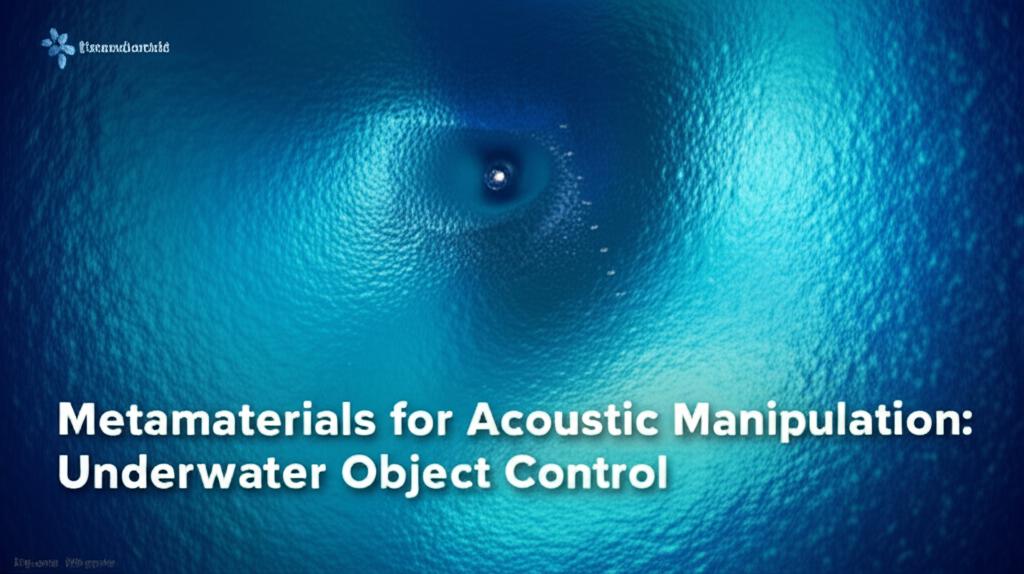The manipulation of objects underwater without direct contact has long been a complex challenge. However, recent advancements in acoustic metamaterials are paving the way for unprecedented control in aquatic environments. These engineered materials, with structures designed at sub-wavelength scales, offer novel ways to interact with and direct sound waves, leading to exciting possibilities for underwater object control.
A key breakthrough in this area involves the development of acoustic metamaterials that can remotely manipulate large objects in water. Traditionally, acoustic manipulation was limited to objects smaller than or comparable to the wavelength of the sound used. Metamaterials overcome this by enabling tailored acoustic radiation forces. By coating an object with a specifically patterned metamaterial layer, the way sound waves reflect off its surface can be precisely controlled. This allows for the generation of specific forces that can push, pull, and rotate objects.
One recent innovation, presented in May 2025, showcases a metamaterial with a sawtooth-patterned surface. This unique topography allows sound waves from adjacent sources to exert differing forces on the material due to how the waves reflect off the "teeth." This enables precise pushing and rotation of an object attached to the metamaterial. Researchers have successfully demonstrated this capability with various materials like wood, wax, and plastic foam, both floating and fully submerged, achieving three-dimensional manipulation for submerged items.
The fabrication of these underwater acoustic metamaterials has also seen significant progress. A new technique utilizing a metal-resin composite and soft lithography allows for submillimeter-scale feature resolution and high acoustic impedance contrast with water – crucial properties for effective underwater operation. This method is not only low-cost and relatively easy to implement but also addresses the challenge of achieving the necessary material properties, which was a hurdle for conventional fabrication approaches.
These advancements are not limited to simply moving objects. Researchers are exploring methods like surface pattern superimposition and frequency multiplexing to integrate different manipulation forces within a single metamaterial patch. This could lead to more complex operations, including the manipulation of multiple objects, guiding objects along specific paths, and even non-invasive maneuvers.
The potential applications for this technology are vast. In the underwater realm, it could revolutionize how underwater robots operate, assist in vehicle transportation and assembly, and improve underwater sensing and communication. Beyond marine applications, the principles of acoustic manipulation in liquid media have significant implications for the biomedical field. Since the human body is primarily composed of water, these metamaterials could one day be used for remote surgery, targeted drug delivery, and in-body levitation and actuation.
While the field is rapidly evolving, researchers are continually working to develop smaller, more flexible metamaterial patches to enhance their applicability in diverse scenarios, from intricate underwater robotics to delicate medical procedures. The ongoing development of underwater acoustic metamaterials signals a new era of contactless control, promising to transform operations in both engineered and biological aquatic environments.

